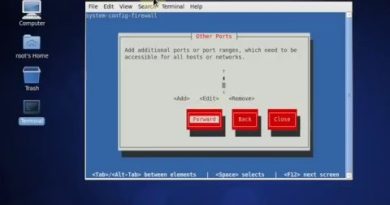How to Install Apache on CentOS 7
Disclaimer/Disclosure: Some of the content was synthetically produced using various Generative AI (artificial intelligence) tools; so, there may be inaccuracies or misleading information present in the video. Please consider this before relying on the content to make any decisions or take any actions etc. If you still have any concerns, please feel free to write them in a comment. Thank you.
—
Summary: Learn how to install Apache web server on CentOS 7 with this comprehensive step-by-step guide, including basic configurations to get your web server running smoothly.
—
How to Install Apache on CentOS 7: A Step-by-Step Guide
Apache HTTP Server, commonly known as Apache, is one of the most widely used web servers in the world. For those managing websites and applications on CentOS 7, installing Apache can be an essential step. This guide will walk you through the installation process of Apache on a CentOS 7 system, ensuring you have a running web server that can serve your websites to visitors.
Step 1: Update Your System
Before installing any new software, it’s a good practice to update your system packages to the latest versions. This can help avoid potential conflicts and ensure your system has the latest security patches. You can update your CentOS system by running the following command:
[[See Video to Reveal this Text or Code Snippet]]
Step 2: Install Apache
To install Apache on CentOS 7, you can use the YUM package manager, which handles the installation and dependency management automatically. To install Apache, execute the following command:
[[See Video to Reveal this Text or Code Snippet]]
This command will install Apache and any required dependencies on your CentOS server.
Step 3: Start and Enable Apache Service
Once Apache is installed, the next step is to start the Apache service so that it runs immediately, and enable it to start automatically on system boot. Use the following commands to start and enable the Apache service:
[[See Video to Reveal this Text or Code Snippet]]
To verify that Apache is running, you can use:
[[See Video to Reveal this Text or Code Snippet]]
Step 4: Adjust Firewall Settings
CentOS 7 uses firewalld as the default firewall program. You’ll need to configure it to allow HTTP (and HTTPS if necessary) traffic. Run the following commands to permanently allow HTTP and HTTPS traffic:
[[See Video to Reveal this Text or Code Snippet]]
This ensures that your web server can receive HTTP and HTTPS requests from clients.
Step 5: Test Apache Installation
To test that Apache is properly installed and functioning, open a web browser and navigate to your server’s IP address. You should see the default CentOS 7 Apache web page, which indicates that the server is properly installed and accessible.
If you’re unsure of your server’s IP address, you can find it by running:
[[See Video to Reveal this Text or Code Snippet]]
Look for the IP address under your network interface.
Step 6: Configure Apache (Optional)
After installation, you might want to add your website content and make configuration changes. Apache’s configuration files are located in /etc/httpd/conf. The main configuration file is httpd.conf. You can edit this file to configure Apache to meet your requirements. Some common configurations include setting up virtual hosts to serve multiple websites, customizing directory listings, or configuring directory permissions.
[[See Video to Reveal this Text or Code Snippet]]
Conclusion
You have successfully installed Apache on your CentOS 7 server. This basic setup is only the beginning, and you can further configure Apache to optimize performance, enhance security, and manage more complex websites or applications. Apache is robust and flexible, making it a reliable choice for both beginners and professional web administrators.
centos 7



